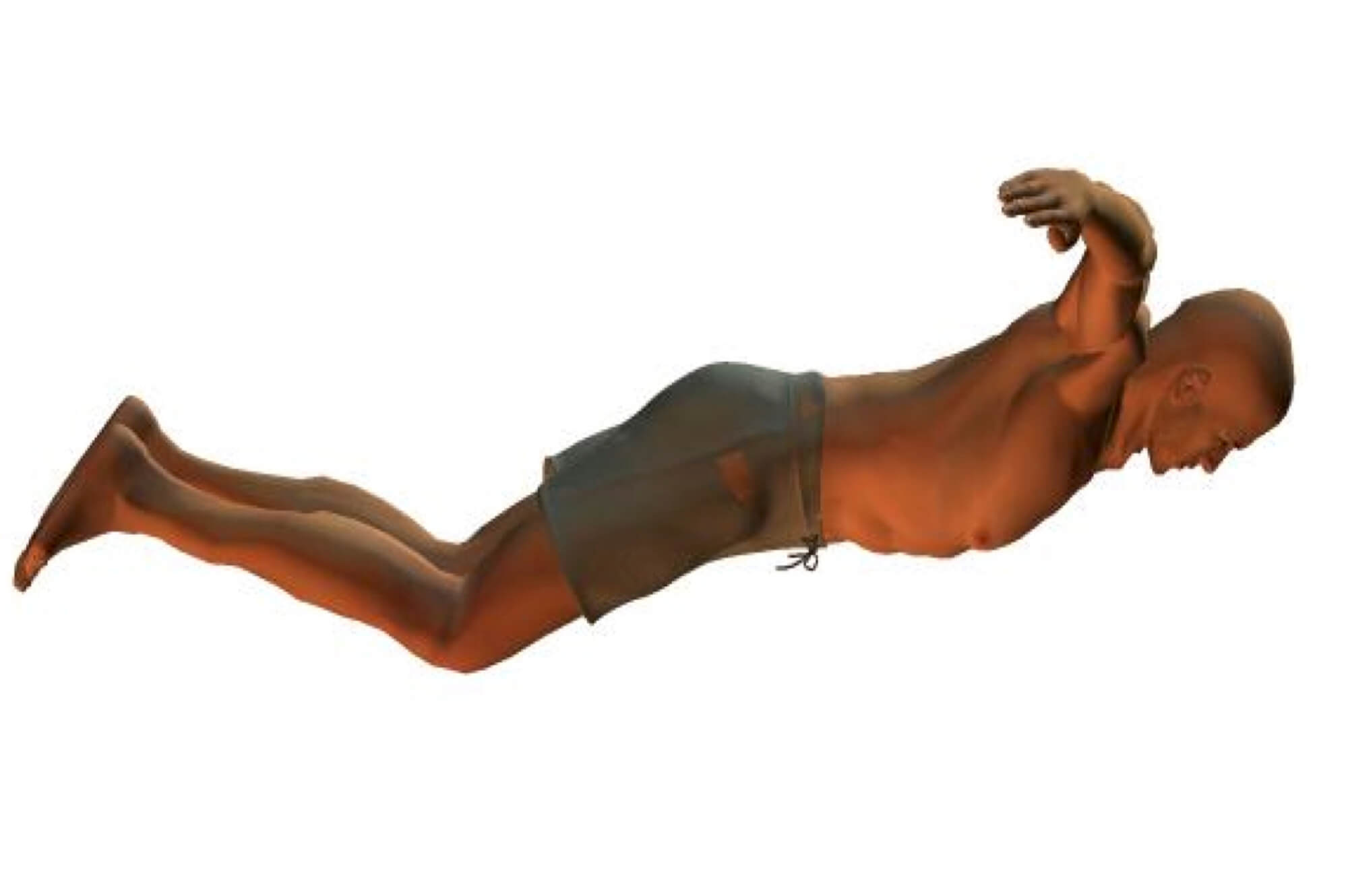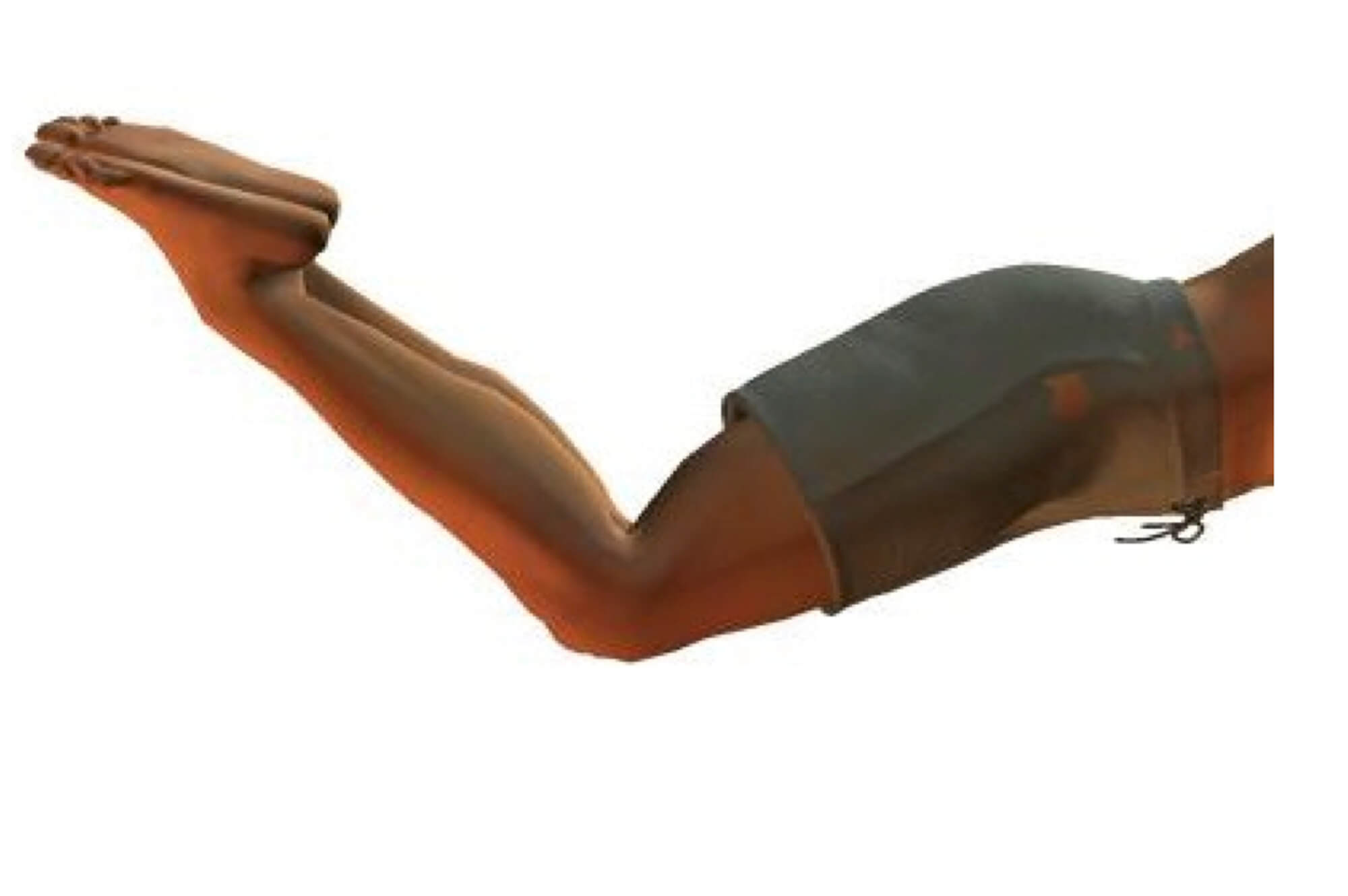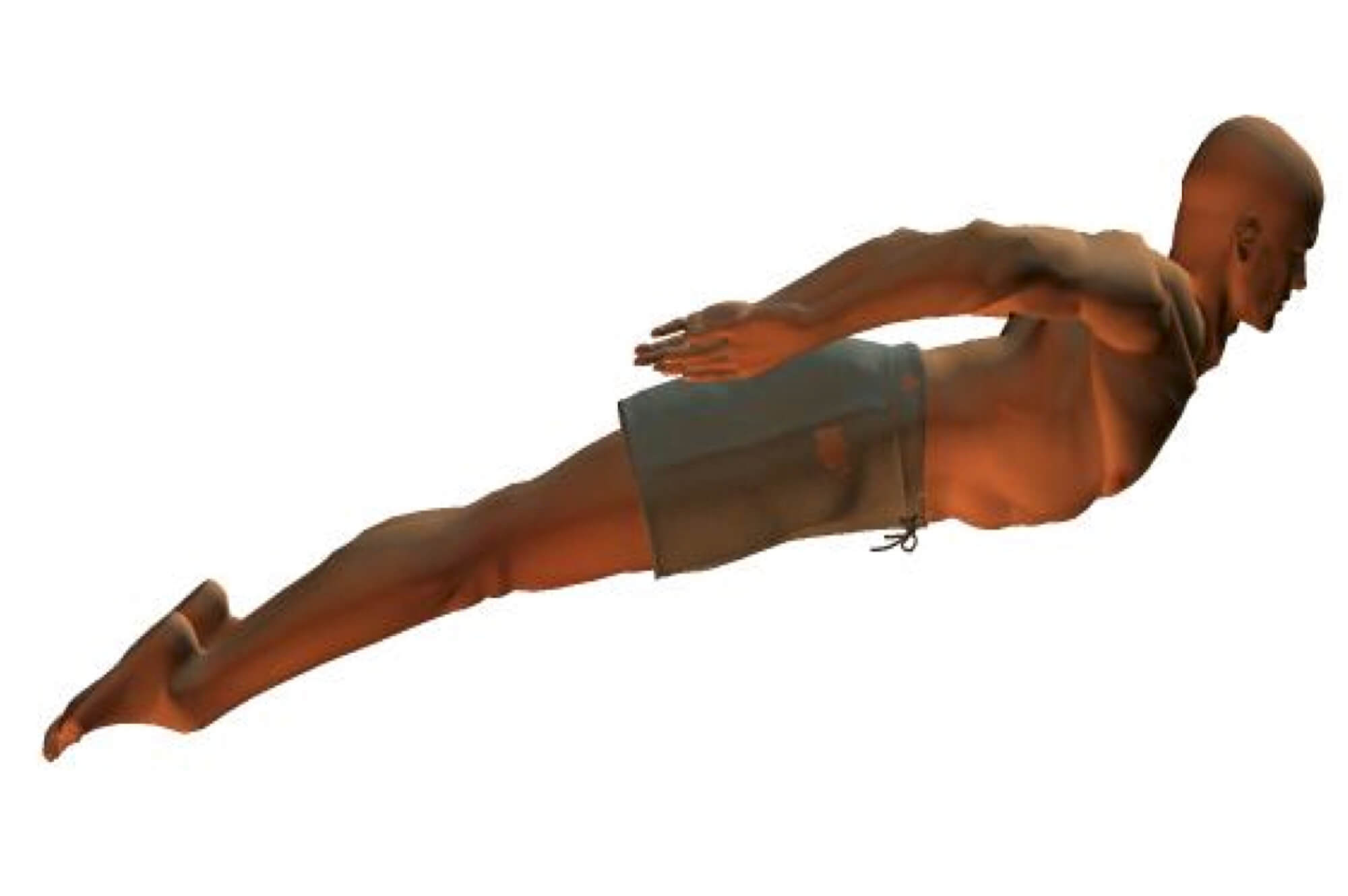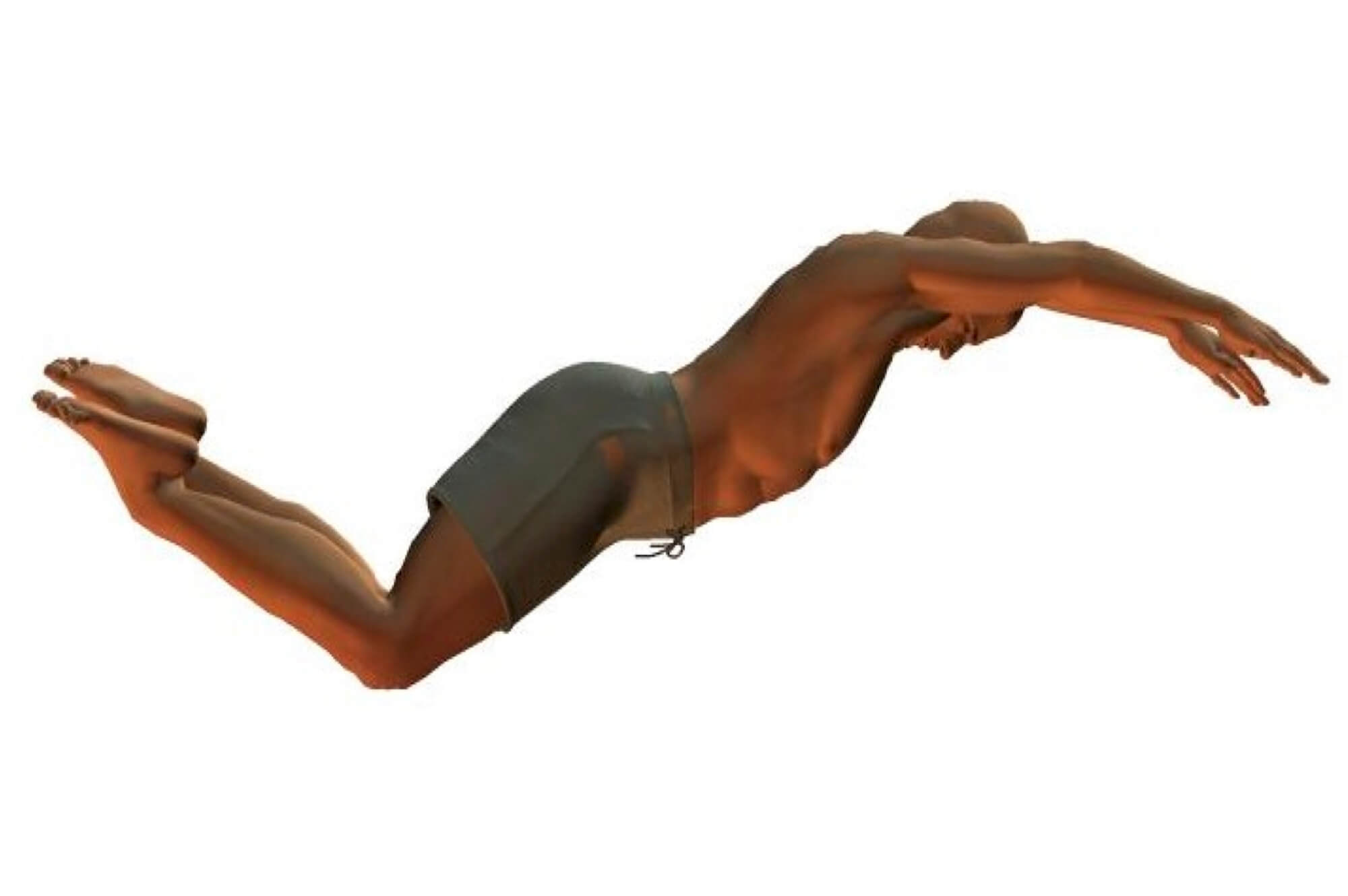- Swim Teach Home
- butterfly stroke
How To Do Butterfly Stroke (Without Feeling Like You're Drowning)
Let me guess: you've watched someone swimming butterfly and thought, "I'd love to know how to do butterfly stroke, but there is no way I could ever do it." You're not alone. It's a tough stroke - no sugarcoating that - but guess what? With the proper guidance, a bit of practice, and a splash of patience, you can totally get it.
Whether you're just dipping your toes into swimming or trying to clean up your butterfly technique, I'm here to help break it down in a way that makes sense - step-by-step - and with no technical jargon.
So… What Is the Butterfly Stroke?
The butterfly is all about rhythm, power, and coordination. And yeah - it looks fancy, but when you understand how it works, you can actually begin swimming it with some grace and flow.
It's made up of four main parts:
- Both arms move together in a windmill-like motion.
- Your legs do what's called a "dolphin kick."
- Your body undulates like a wave - think "wiggle from the head and chest down."
- And breathing… yep, you'll need to lift your head out of the water to inhale without disrupting the flow.
Sounds like a lot? Don't worry. We'll take it step by step.
let me be honest...
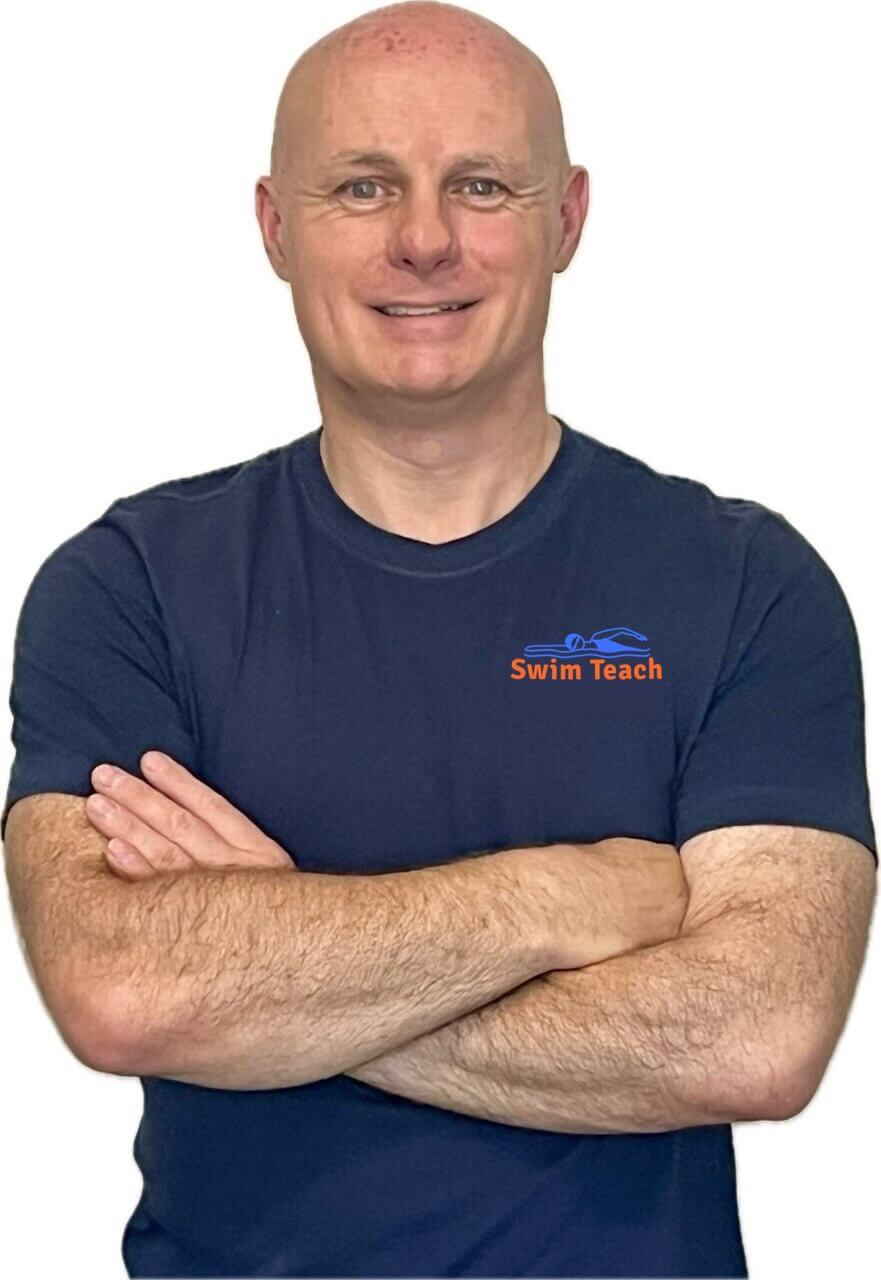
"Let me be honest: butterfly was the last stroke I personally mastered — and it took me longer than freestyle and breaststroke combined. But once I stopped fighting the water and started flowing with it, everything changed. If I can do it, you definitely can."
Let's Start with the Basics — Body Position
Think long and flat, like a surfboard. You want to be stretched out on the surface of the water, belly down, eyes looking down (not forward), with your arms reaching out ahead.
Try to stay streamlined — this helps you move through the water more smoothly and with less effort.
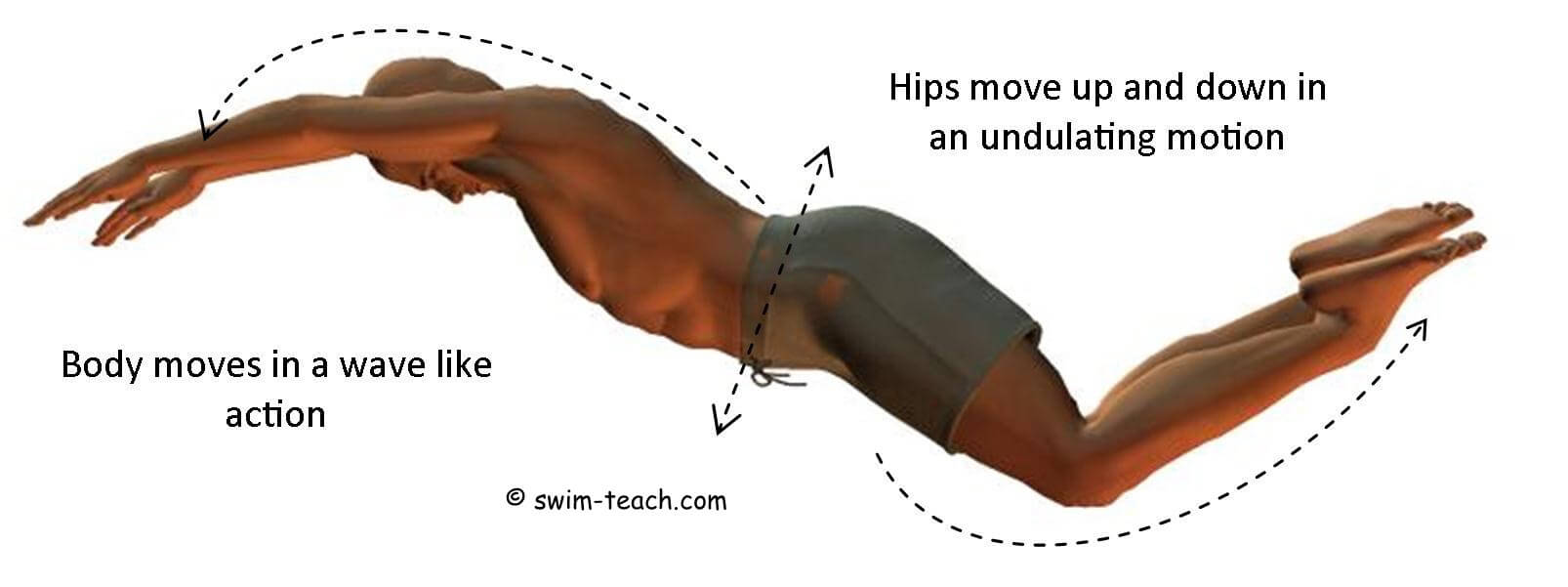 The undulating butterfly stroke body movement
The undulating butterfly stroke body movementArm Movements — Big and Powerful
Here's how to think about your arms in three phases:
- Pull – Both hands enter the water shoulder-width apart and sweep outwards.
- Push – Scoop inward and then push back, like you're doing a big chest fly.
- Recovery – Bring both arms up and over the water — this is the big, flashy part.
Pro tip: Try to keep your arms relaxed during recovery. If you're too stiff, you'll tire out real quick.
 Butterfly stroke arm movements
Butterfly stroke arm movementsDolphin Kick - It's All in the Hips
Now this part feels a little strange at first, but stick with me.
Your legs stay close together and move in a fluid, whip-like motion. It's not about kicking from the knees - you want to start the motion from your hips. Think about your whole body moving like a wave.
You'll do two kicks per arm cycle:
- One when your arms are pulling.
- One during the recovery when your arms come over the water.

Breathing - Don't Forget to Exhale!
Breathing in butterfly stroke can feel like a puzzle. The trick is to lift your chin just enough during the arm recovery to take a quick breath - then get your face back in the water fast.
Don't lift your head too high - that'll mess with your rhythm and slow you down. And don't forget to blow your bubbles out under the water so you're ready for that next breath.
 Butterfly stroke breathing technique
Butterfly stroke breathing techniqueCommon Mistakes (and How to Avoid Them)
You're gonna mess up at first - totally normal. Let's go over a few bumps in the road most people hit:
- Getting out of sync - If your kick and arm pull aren't working together, the stroke feels clunky. Practice timing!
- Breathing too late or too high - Try not to crane your neck. It should feel quick and natural.
- Stiff arms - Keep 'em loose and swinging, not tense and robotic.
 How to perform butterfly stroke technique
How to perform butterfly stroke techniqueEasy Drills to Get You Feeling the Flow
Here are a few of my favorite butterfly drills to help you feel the motion without the overwhelm:
Slow Body Dolphin Drill
Just use your body — no arms. Kick in a slow wave-like motion from your chest to your toes. It's great for feeling that undulation.
Single Arm Fly
Use one arm while the other stays out front. This helps you get the hang of timing without overloading your brain.
Kick on Your Back
Practice dolphin kicks in a supine position (on your back), with your arms by your sides. Get your hips moving and your kicks breaking the surface of the water. This helps build strength and stamina.
feel the wave...

"When your butterfly stroke flows well, you can literally feel the wave you're creating with your chest and hips. It's like your body becomes part of the water's rhythm — surge, glide, surge, glide. It's a powerful and almost meditative feeling once it clicks."
download your butterfly stroke cheat sheet
No problem!
Download this butterfly cheat sheet to keep handy during your next swim. It's simple, visual, and easy to follow.
Want to See It in Action?
Watching others can make a huge difference. Check out this helpful video:

how to do Butterfly Stroke: A step-by-step Guidebook
Learning how to do butterfly stroke is challenging and requires time, patience, and practice. Don't feel disheartened if you can't get it right immediately. My book 'How To Swim Butterfly' has everything you need, including 20 separate exercises that focus and fine-tune each part of your technique. (click here for an instant preview)
Click the cover image to view a preview or click add to cart and grab a copy of my book now!
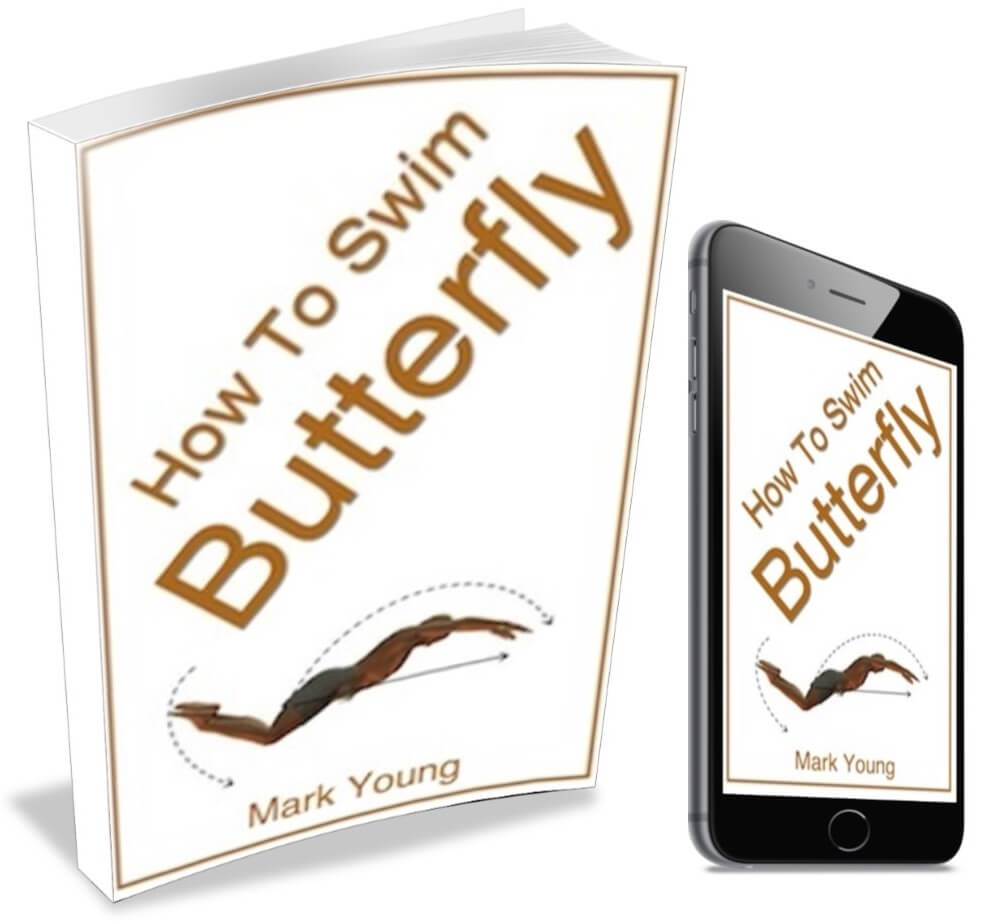 How To Swim Butterfly
How To Swim Butterfly$9.99

I am a member of the Amazon Associates Program and I will earn a commission from qualifying purchases at no extra cost to you.
Need Some Help or Got a Butterfly Stroke Story To Tell?
Tell Us - Ask Us - Show Us - Right here...

